Traditionally Mandalas are a circular design representing the universe in Hindu and Buddhist symbolism. In more modern terms a mandala can be a symbol from a dream, and can represent the dreamer’s search for completeness. Here are 40 beautiful mandala drawing ideas, as well as how to draw one.
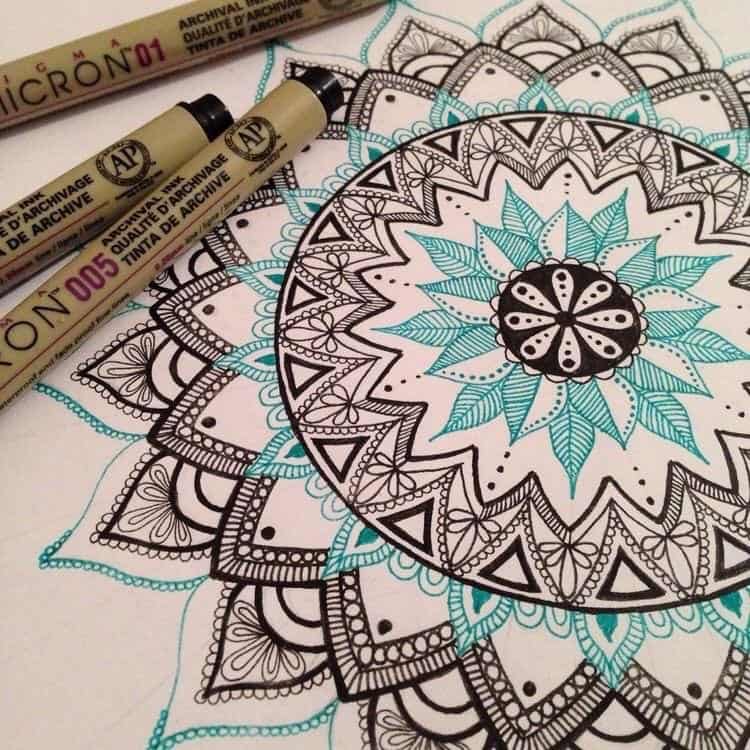
The History
The word mandalacomes from Sanskrit, an ancient Indian language. Literally it means “circle” and can mean anything that is round or circular.
In the modern era, it is often the circular repetition of shapes within the design that defines it as a mandala. Although, I have seen many that don’t necessarily fit the traditional description.
Nevertheless, it is hard to describe them as anything other than a mandala. One example would be the many ‘hand of Fatima’ tattoos I have seen. They are not circular, but definitely a mandala of sorts.
To me, a mandala is a symbol of spiritual awakening, or a search for enlightenment. They generally have one identifiable centre point, from which emanate an array of symbols, shapes and other geometric and organic forms.
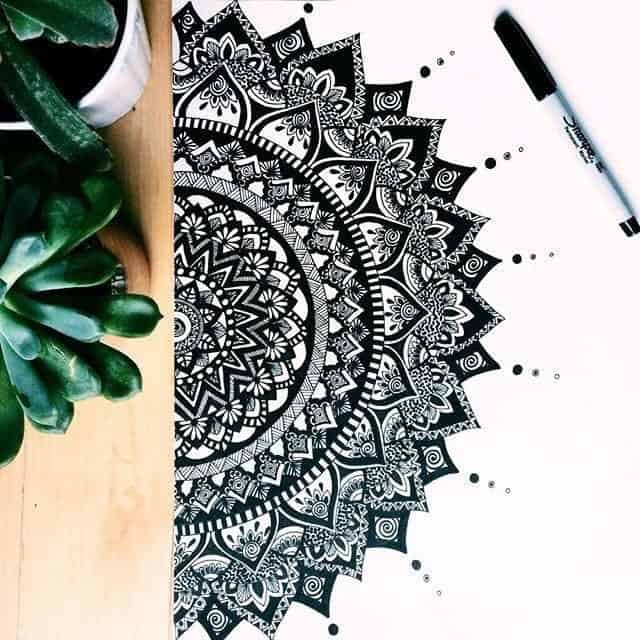
Drawing Mandalas can be a mechanical and mathematical exercise. Some people find it laborious or even boring, but personally I would say that drawing the mandala is a spiritual journey itself.
Traditionally it is often the drawing of the mandala that forms the basis of the ‘Journey’ to enlightenment. The destruction of the final image can be an integral part of this process. When the mandala is finished, however long it takes for the monks to complete this divine geometry of the heavens, they pray over it, and then they destroy it. This is because the underlying message of any mandala ceremony is that nothing is permanent.
Spiritual awakening is something that is very personal. Using symbols or images that mean something special to you is vital in the creation of any mandala design.
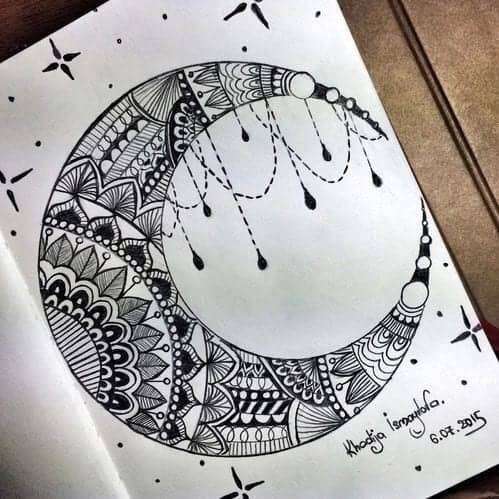
A mandala is a symbol used to help people focus during meditation and achieve a sense of oneness with the universe.
It can be very difficult for some individuals to achieve this level of clarity but Mandalas can help to focus the mind, allowing the person using it to see beyond the physical existence we live in much more easily. Its creation can signify transformation of any kind, but often it is seen as a universal transformation of suffering, into joy.
A mandala is a complex abstract design that is usually circular in form. In fact, “mandala” is a Sanskrit word that means “circle”.
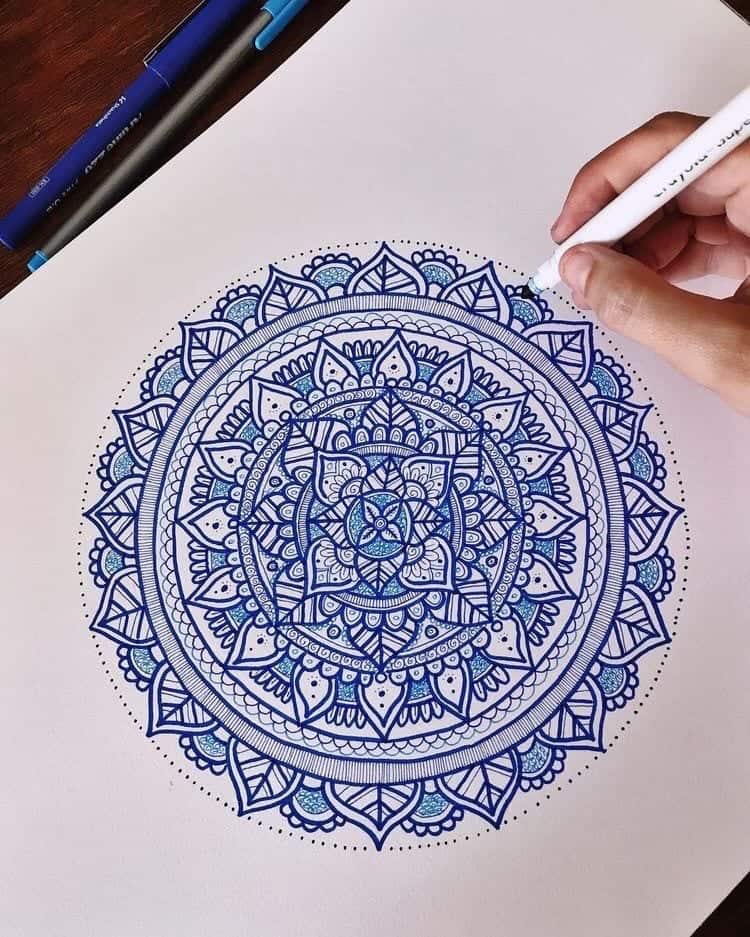
How To Draw A Mandala
You will need a compass, protractor, Pencil and Eraser and Black Fine Point Pens (personally I use Sakura, but Micron, Pitt, and Sharpie are all good options).
Using your compass, draw a circle. I suggest starting with a circle about 7-8 inches in diameter initially to make things easier. In time you can make them smaller or larger to fit their use, but this is a good size to begin with. Find the centre of your mandala and line up the protractor.
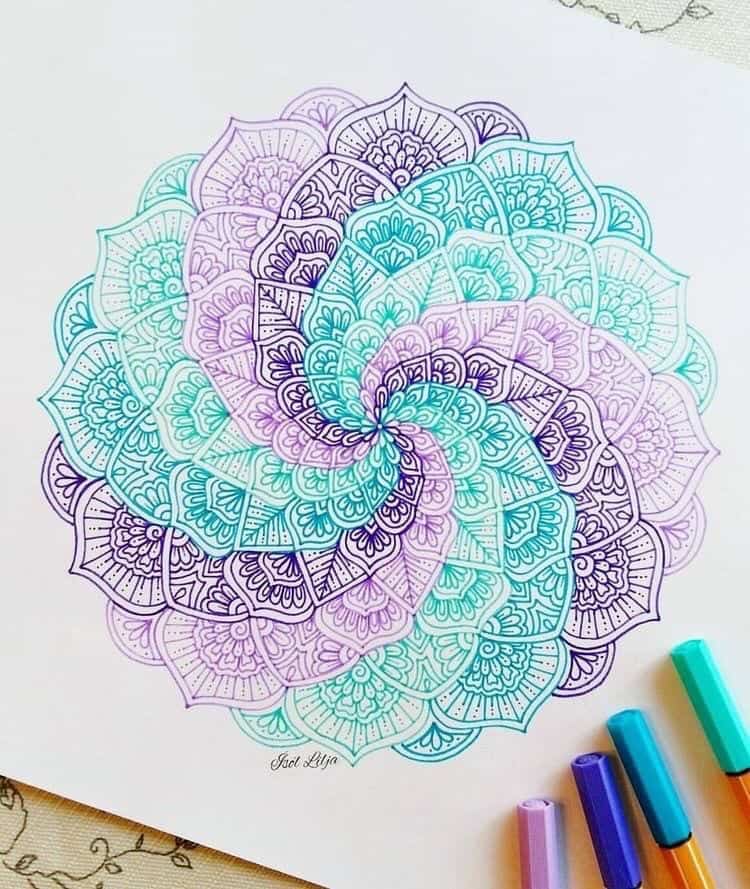
If the final mandala design is to be divided into 12 equal sections, divide 360° by 12 to tell you how big to draw each section. For example: 360° divided by 12 makes each section 30°.
Using your protractor and pencil, mark your circle in 30° increments: i.e. 30°, 60°, 90°, 120°, etc. (For an 8-sectioned mandala, 360°/8=45°: 45°, 90°, 135°, 180°, 225°). Personally I like to double the number of sections I mark, so I have “mid-point” guidelines. So in the example described I measured out 24 equal sections 15 degrees apart (360°/24=15°).
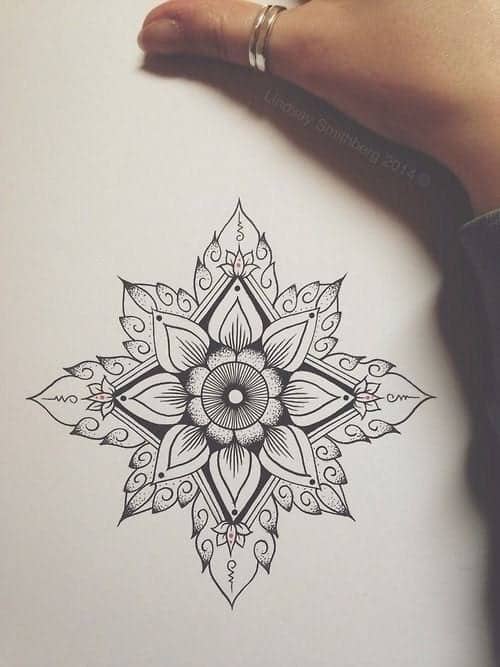
Use a ruler to connect the marks you made with the central point. Be sure to draw your lines lightly as they are only guides and you will want to erase them in a later step.
Using a compass, draw several more circles. Vary the size of each circle to create an interesting pattern. Whether you choose a geometric or organic design, each section should be very similar, it may be that you include 2 designs in one circle, repeating every 2 sections, but don’t get too complex, it is the repetition of the design that is vital for it to work.

Look at shapes that connect the bottom of one grid point to the top of the next guideline and then back down to the next grid point. Repeat the design around the entire circle. You may want to draw with a pencil and then trace over with a black pen later.
Move to the next row and draw another shape, repeating it around the entire circle. You can use same flower petal shapes, triangles, leaf shapes or simple radiating lines. Feel free to mix and match the shapes that you use
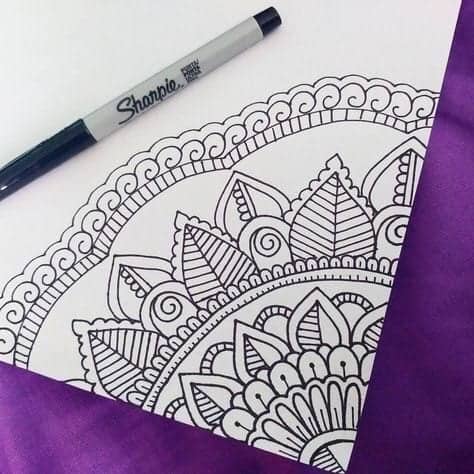
Alternate the placement of the flower petals in each row when compared to the previous one. Change the shape for the third row. You may want to draw a geometric shape and this can be done using a ruler, but I like the look of hand-drawn designs within a carefully measured grid.
The little imperfections add character and charm. You will find your own style, and this will develop with each new mandala that you draw. You don’t need to plan out every design.
Simply start in the centre and work around and out until you fill the mandala with different layers of shapes. It is great fun to work like this and watch the mandala emerge before your very own eyes. Experiment with different shapes and patterns, you will be amazed at some of the designs you create.
Scroll down for more mandala drawing ideas and inspiration.
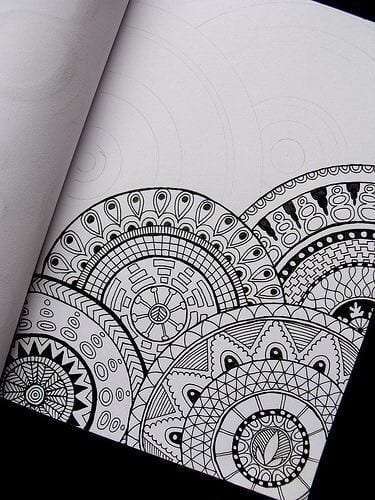
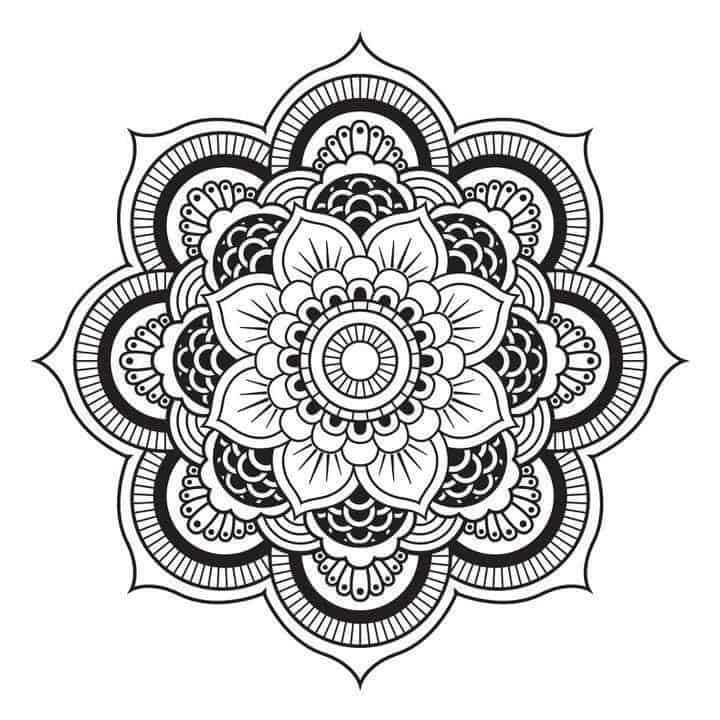
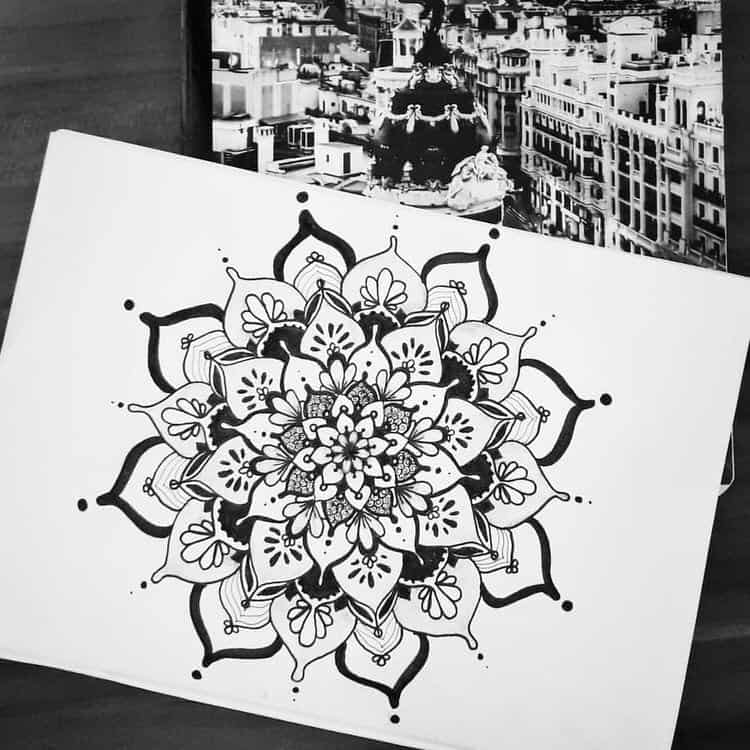
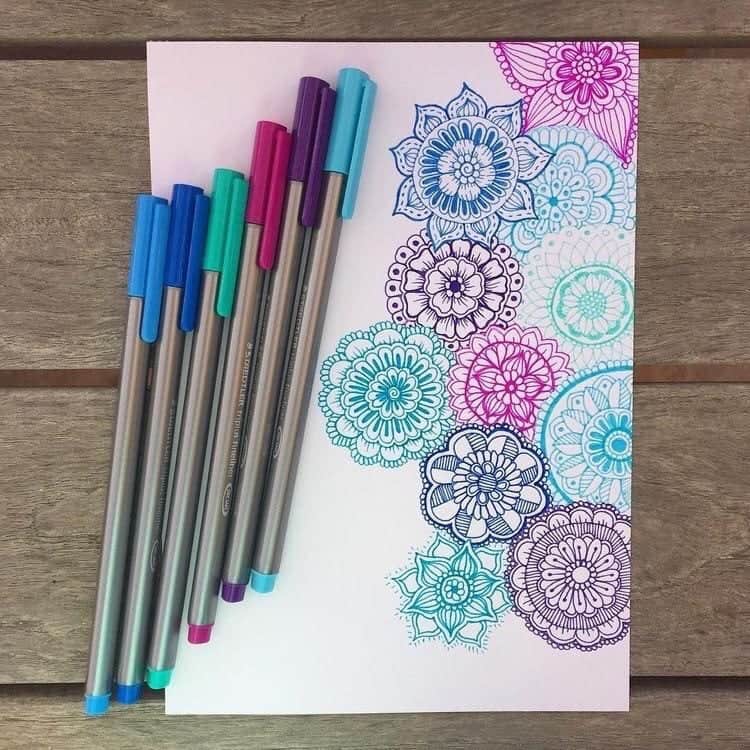
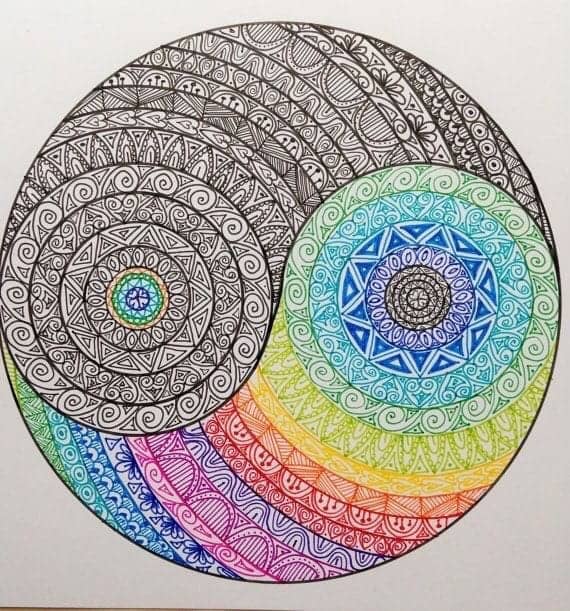
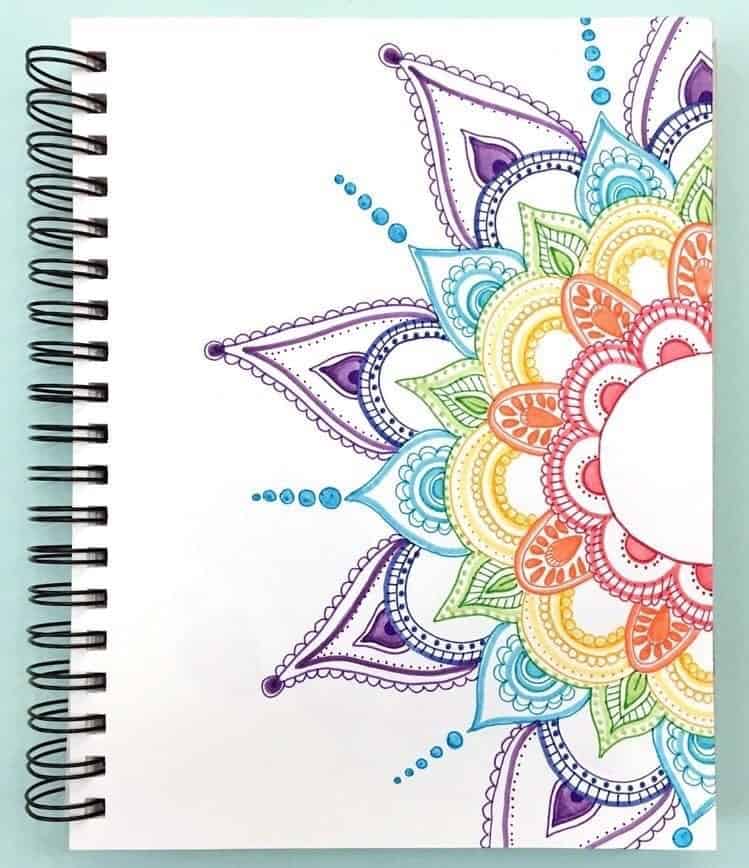
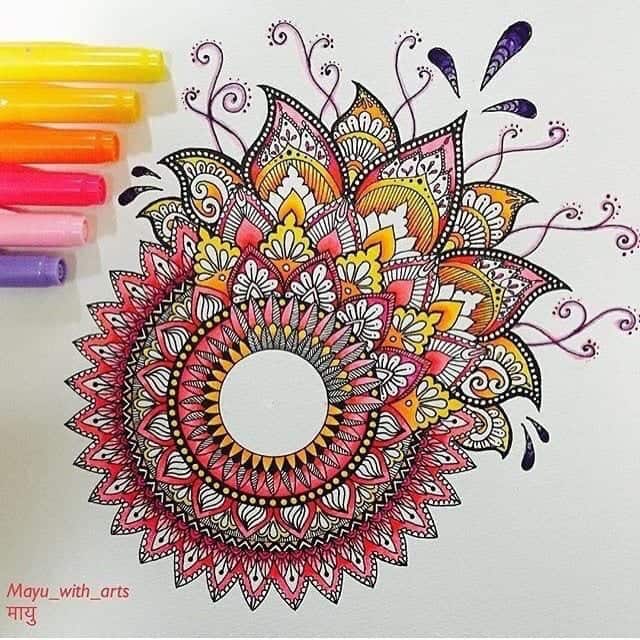
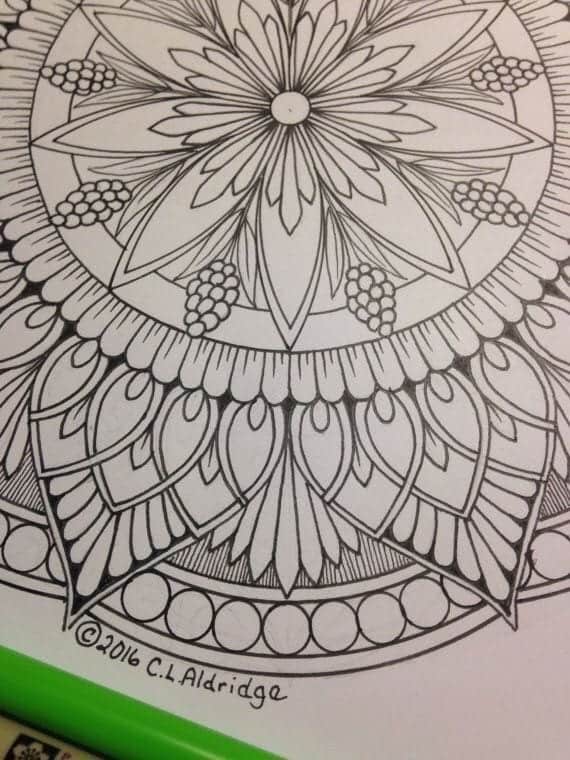
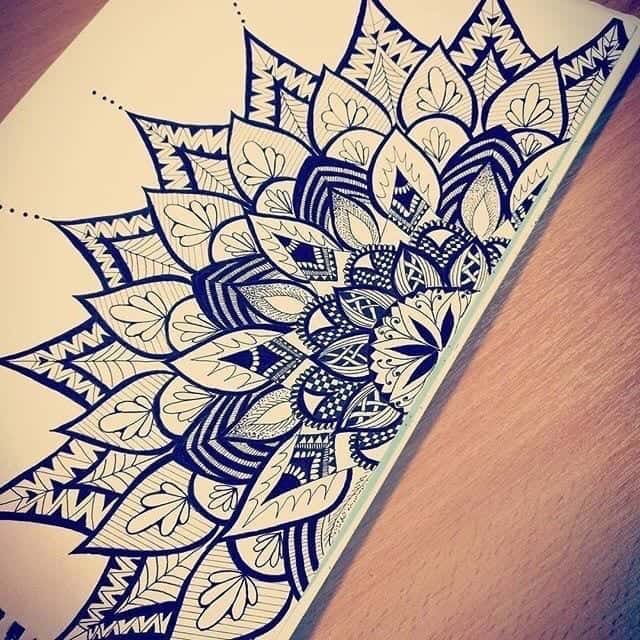
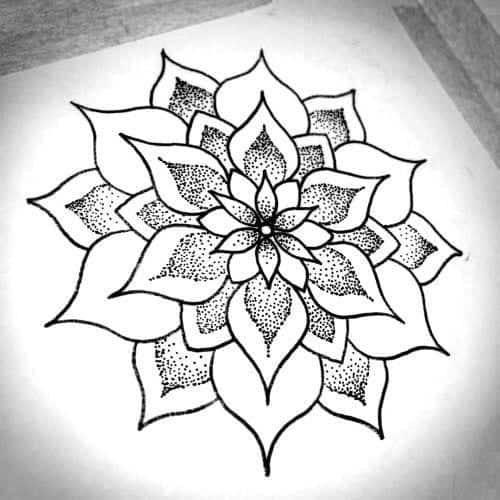
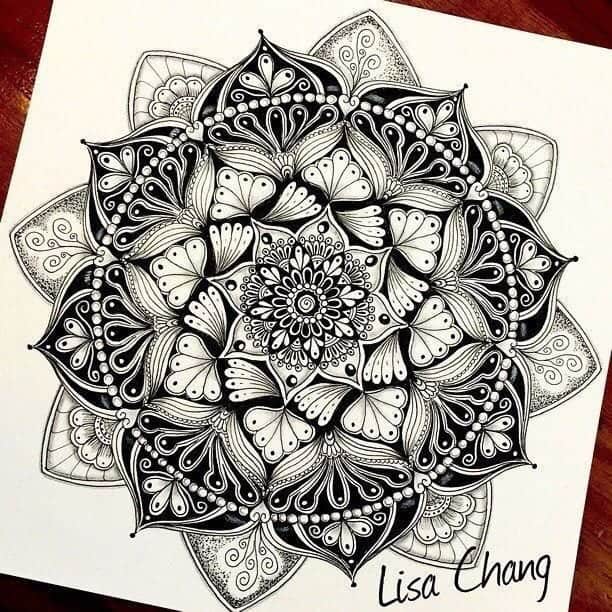
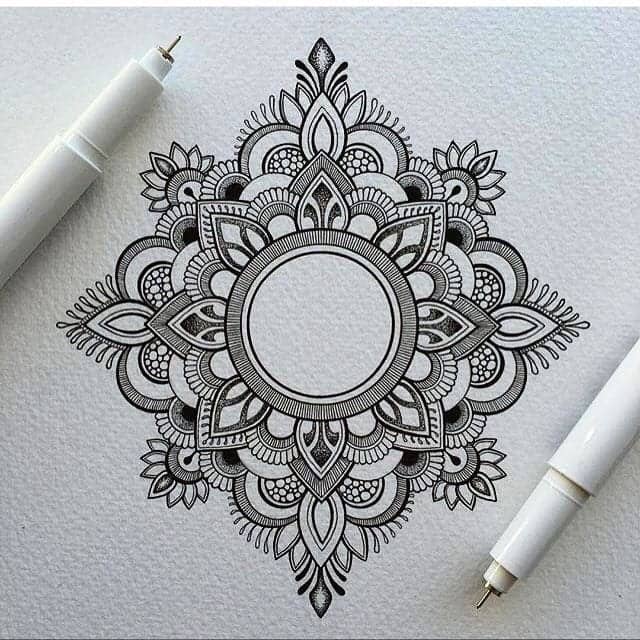
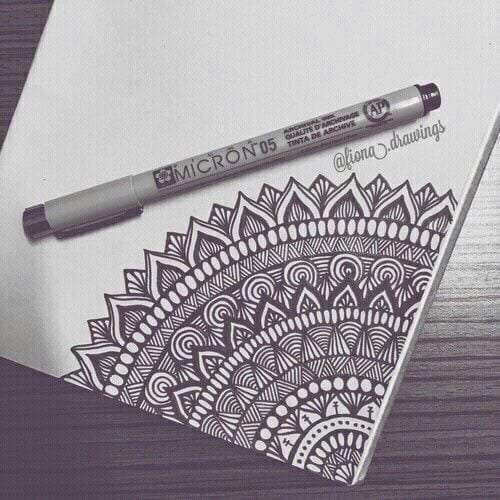
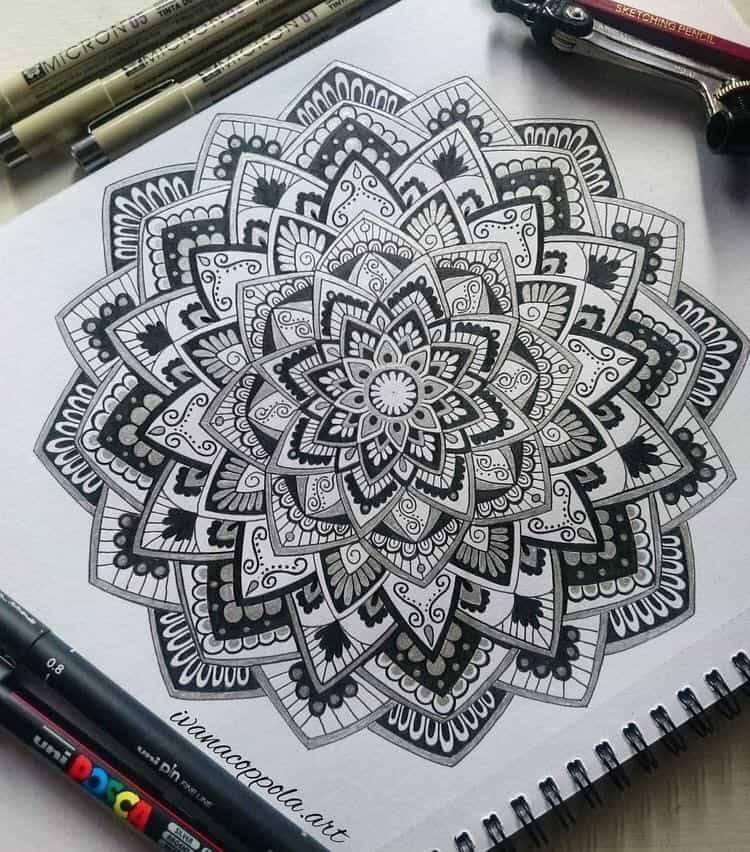
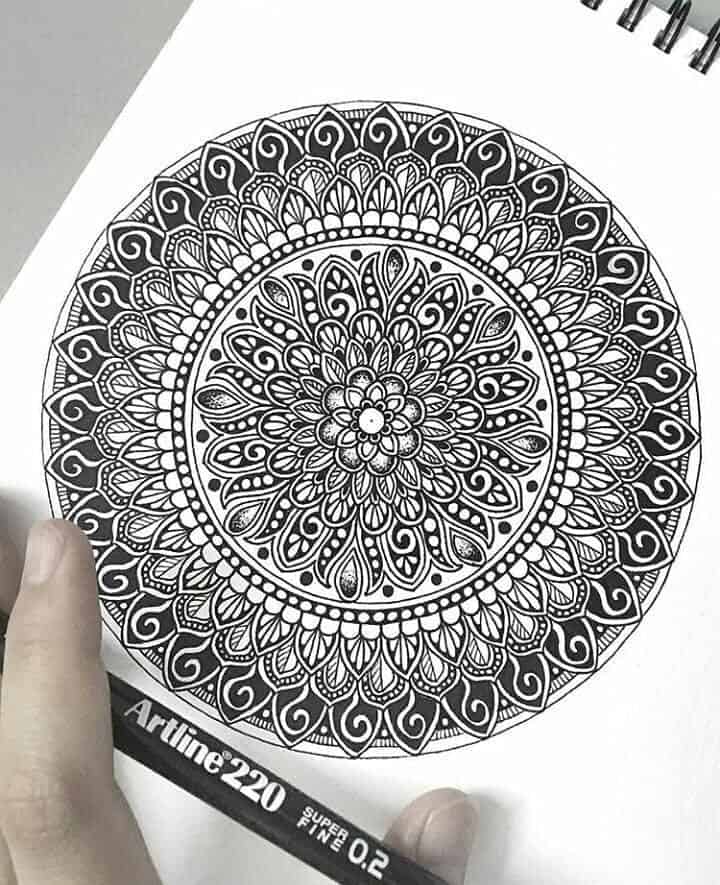
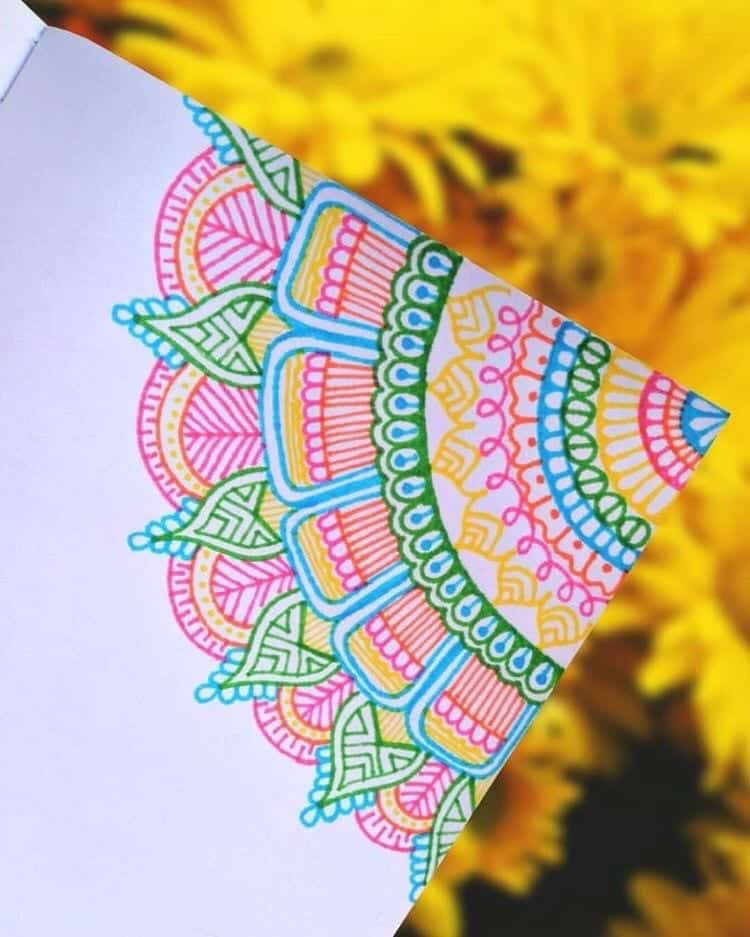
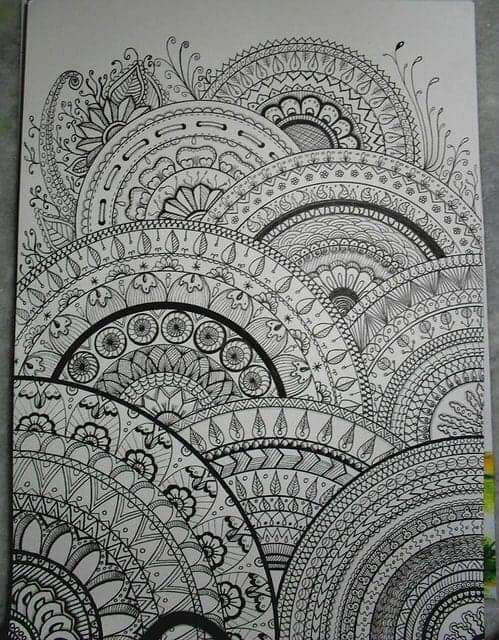
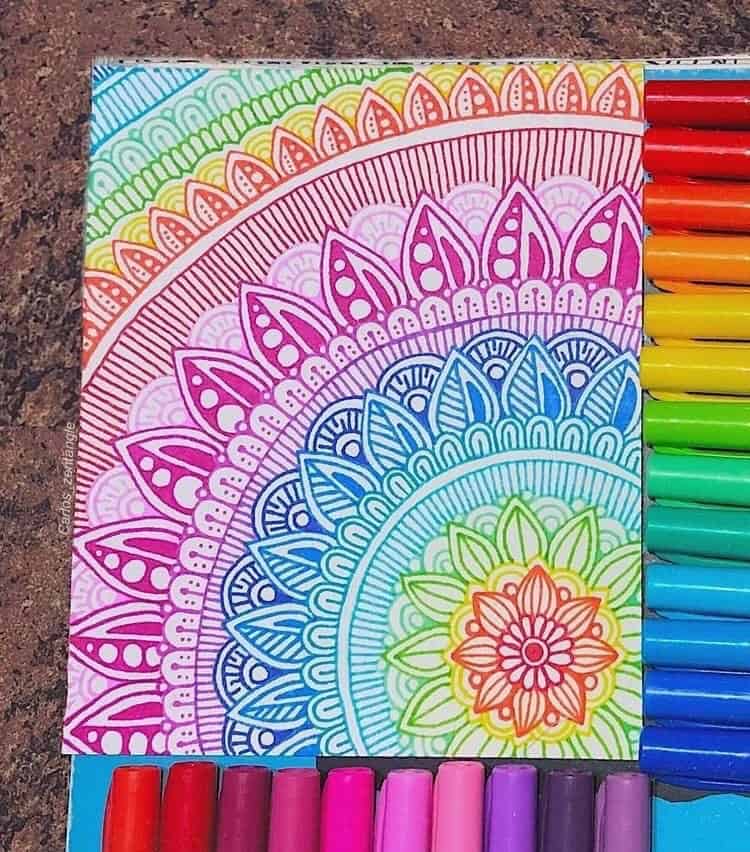
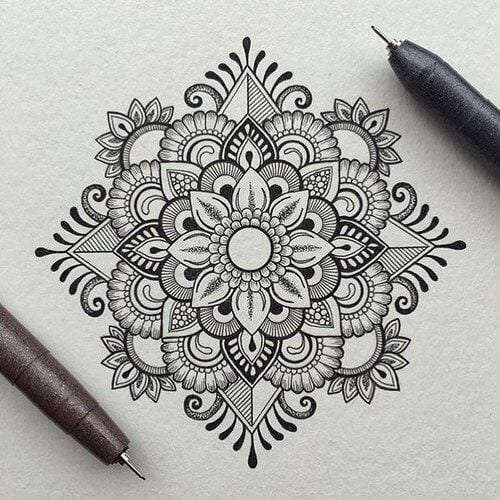
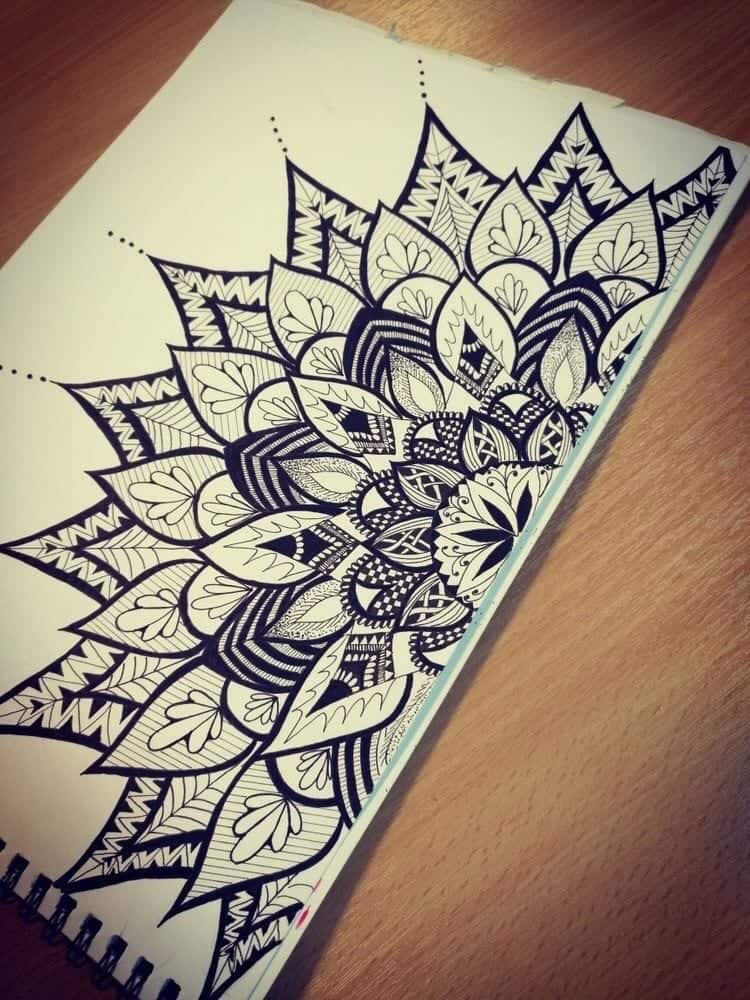
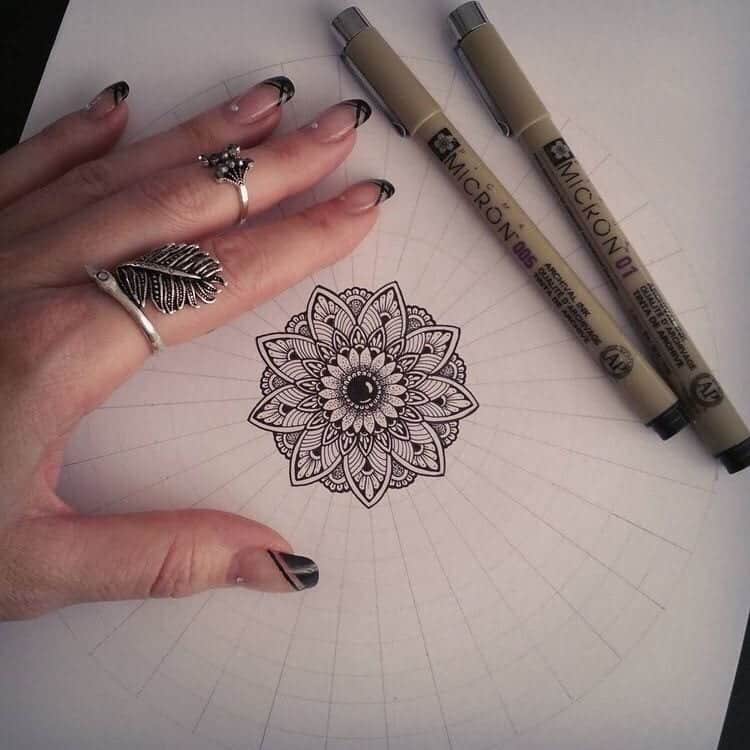
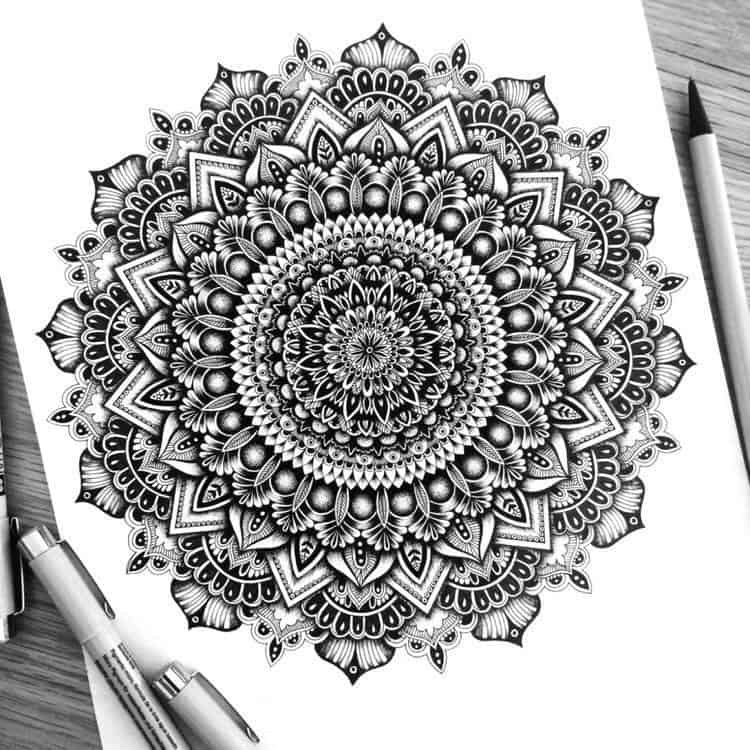
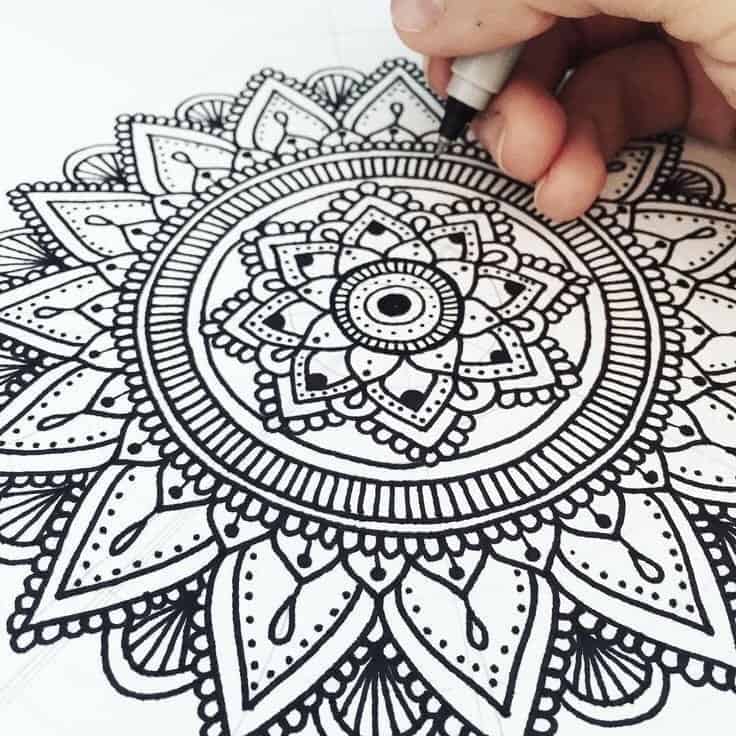
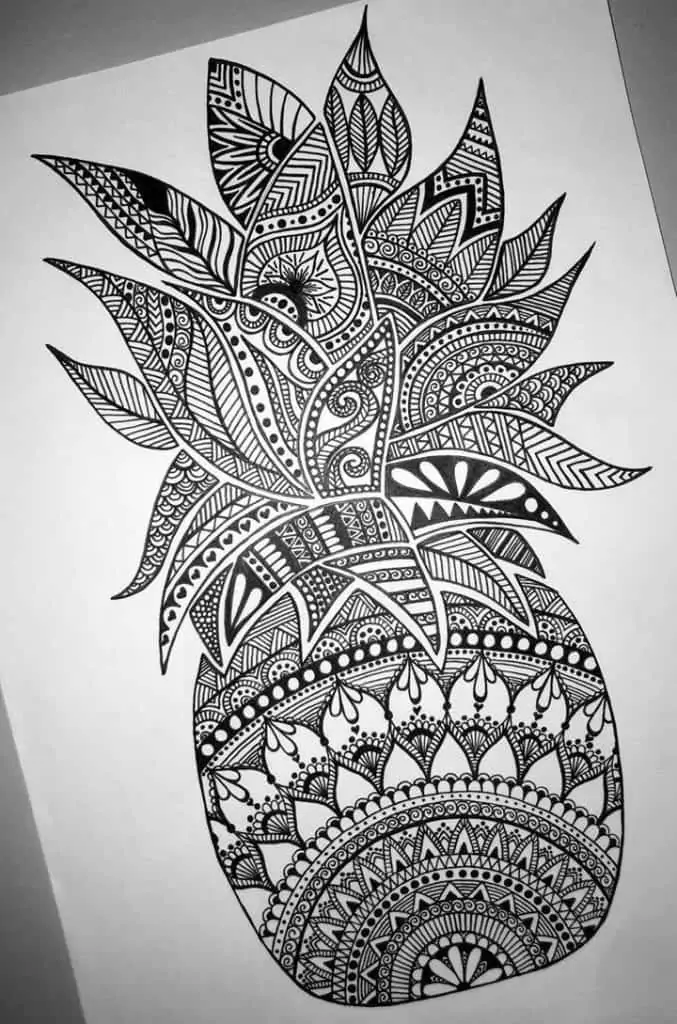
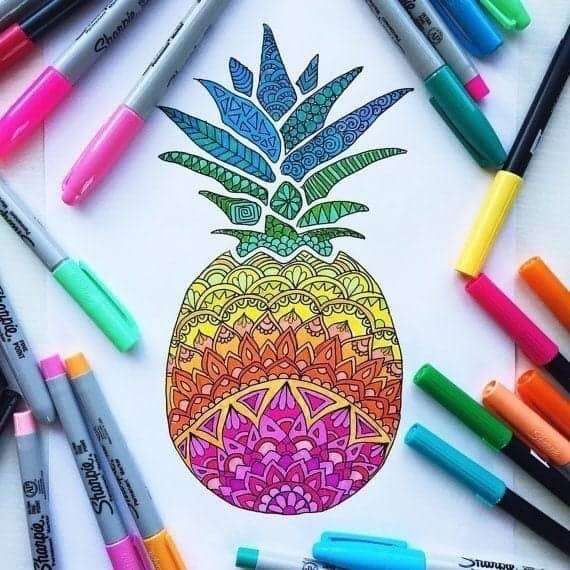
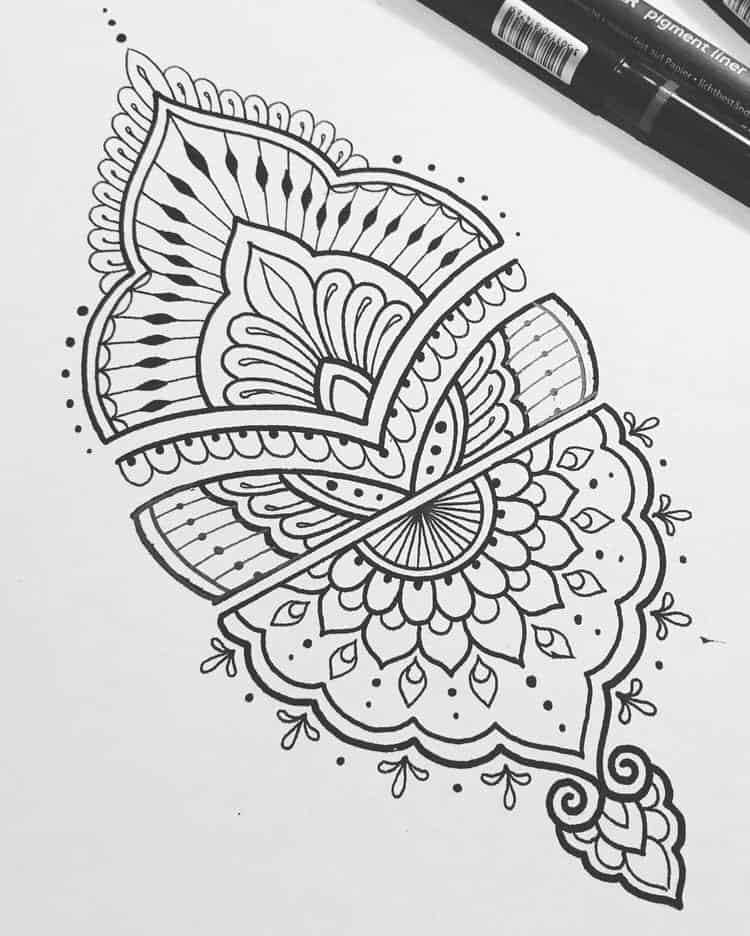
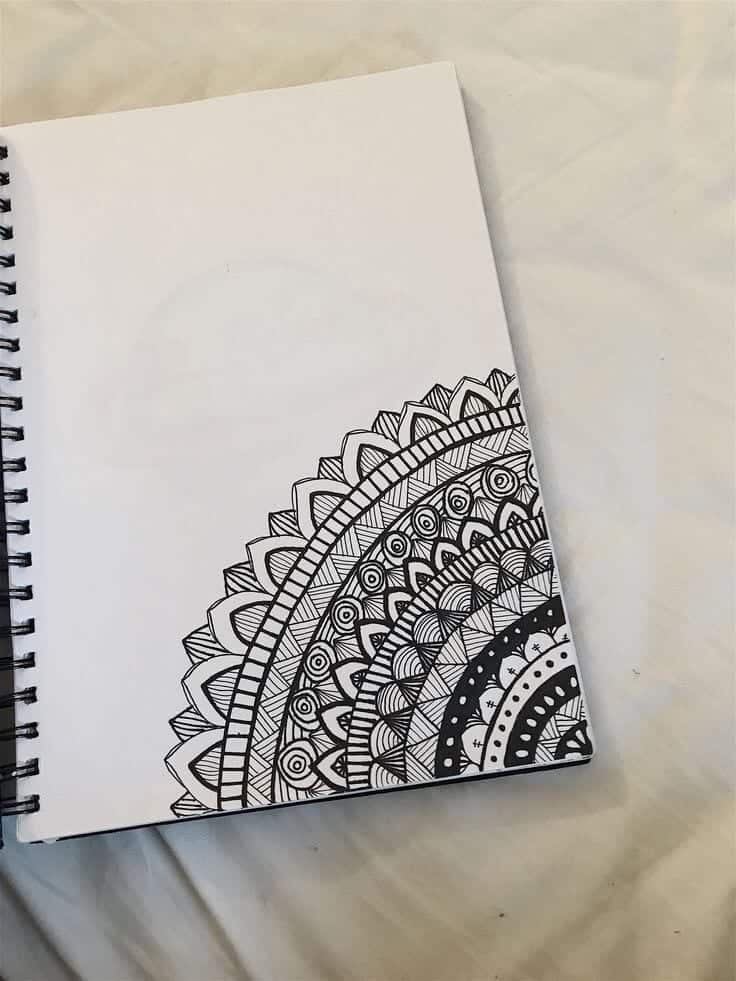
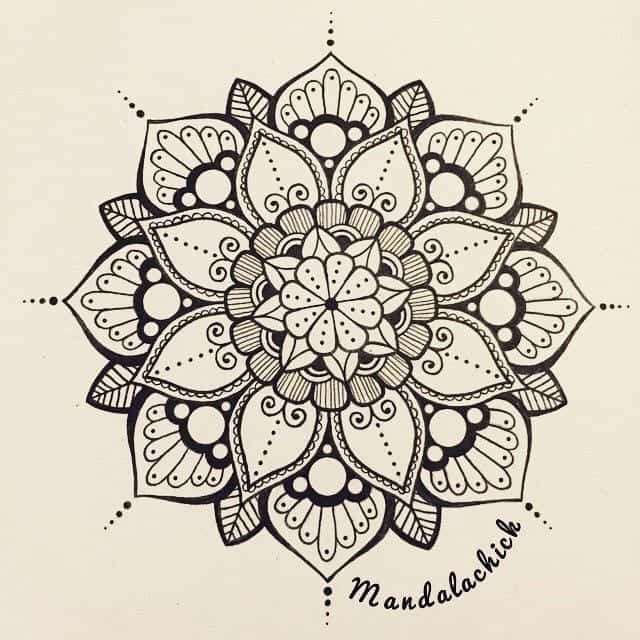
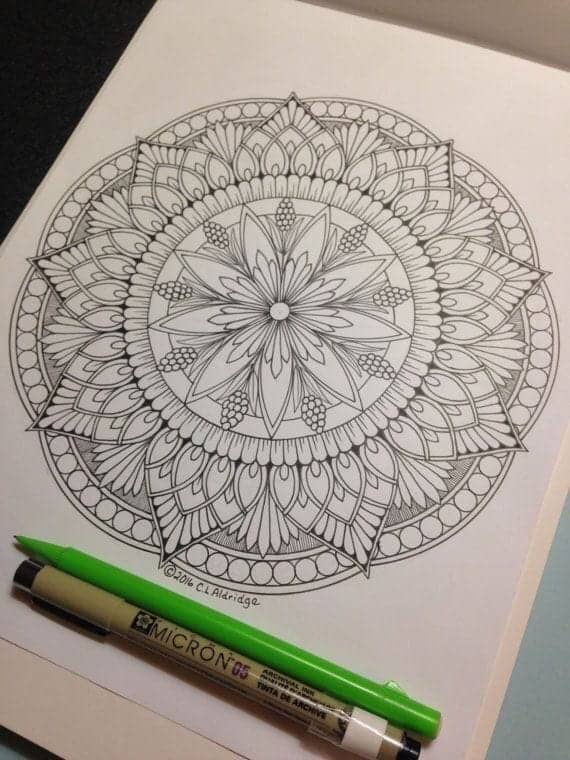
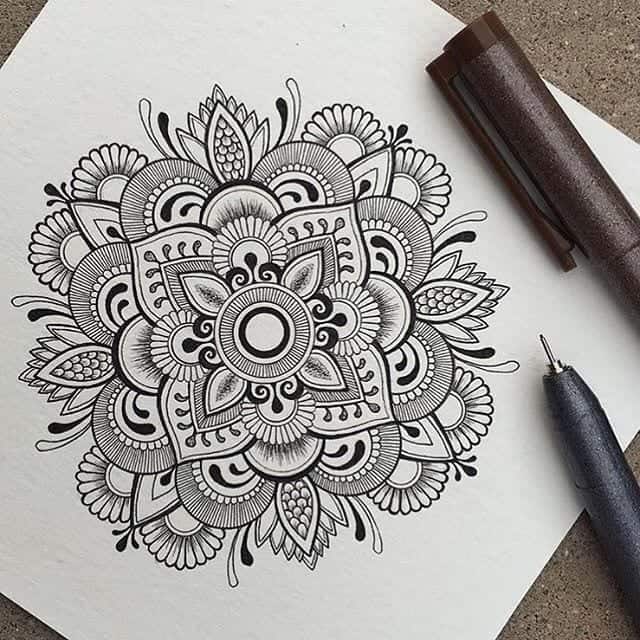
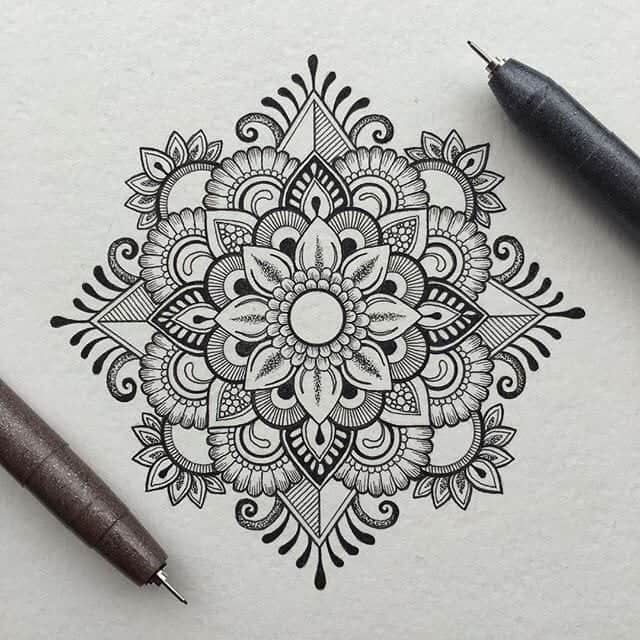
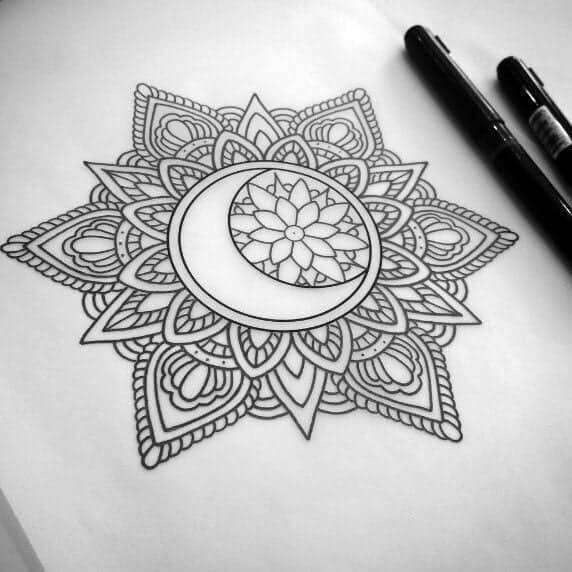
-min.png)

-min.png)